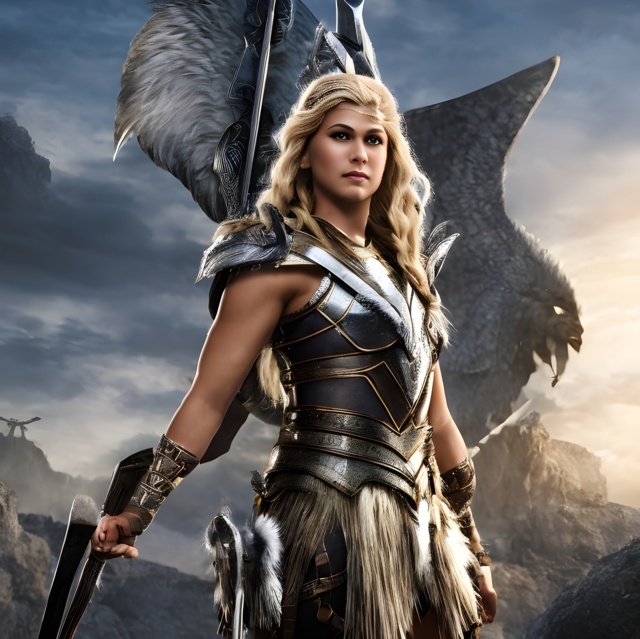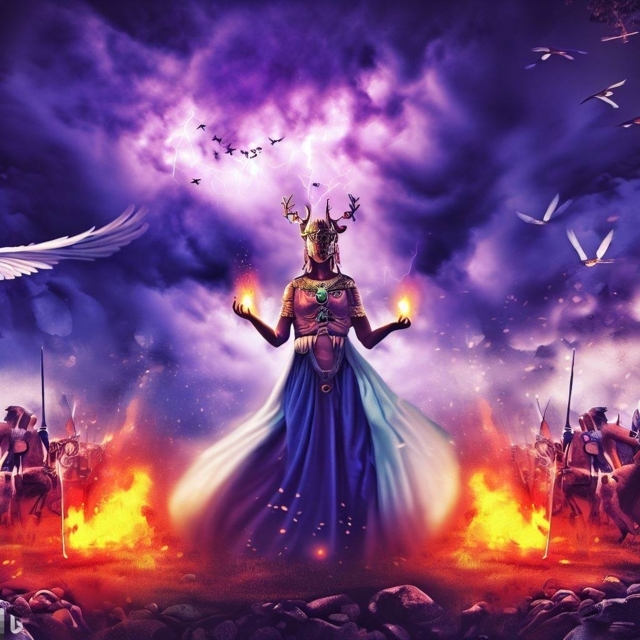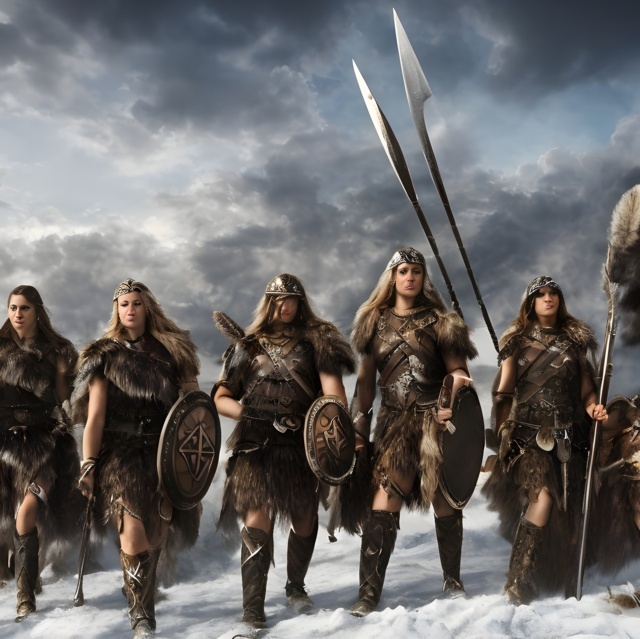In the vast tapestry of Scandinavian mythology, one figure shines brightly as a symbol of beauty, love, and untamed power: Freyja, the goddess who captivated the hearts and minds of the ancient Norse people during the 2nd century. Through her multifaceted nature and profound influence on the world of mythology and religion, Freyja sculpted a legacy that endures to this day. Join me on this journey as we explore the captivating allure and far-reaching impact of Freyja, the enchanting goddess of ancient Scandinavia.
Goddess of Love and Beauty
Freyja, known as the daughter of Njord and the twin sister of Freyr, personified beauty, desire, and fertility. Her radiant presence graced the heavens, and she was often revered as the most beautiful of all the Norse goddesses. Freyja’s golden hair cascaded like sunlight, framing her striking blue eyes that sparkled with wisdom and passion. Her ethereal beauty was complemented by her commanding personality, making her an irresistible and magnetic figure.
Mistress of Love and Desire
Beyond her physical allure, Freyja held dominion over love, desire, and sensuality. She embodied the essence of romantic love and was a patroness of marriage, presiding over weddings and blessing unions with her benevolent touch. Freyja’s enchanting aura also extended to matters of passion and desire, empowering individuals to embrace their carnal instincts and seek fulfilment in physical relationships. Her influence on matters of the heart was profound and far-reaching, shaping the romantic ideals of the ancient Norse people.
Fierce Warrior
Freyja’s character was multifaceted, extending beyond matters of love and beauty. She was also a formidable warrior, embodying the ferocity and courage of the battlefield. Often clad in her magical cloak of falcon feathers, Freyja joined Odin’s Valkyries, guiding fallen warriors to the grand halls of Valhalla. Her presence on the battlefield inspired warriors to fight with unwavering bravery, while her magical prowess ensured their protection and victory. Freyja’s dual nature as both a nurturing figure of love and a fierce warrior exemplified the complexities of the human experience.
Goddess of Magic and Seidr
Freyja’s dominion extended to the mystical realm of magic and divination. She was a master of the ancient Norse practice of seidr, a form of sorcery and prophecy associated with shamanic traditions. Freyja’s wisdom in the magical arts allowed her to peer into the future and manipulate the threads of fate. Her mastery of seidr granted her immense power and profound insight, establishing her as a revered figure in the realm of magic and divination.
Impact on World Mythology and Religion
Freyja’s influence transcended the boundaries of Scandinavian mythology, leaving an indelible mark on the world’s religious and mythological landscape. Her multifaceted nature, combining love, beauty, war, and magic, resonated with countless cultures throughout history. In many pantheons, goddesses akin to Freyja emerged, embodying similar attributes and commanding reverence. The archetype of the divine feminine, represented by Freyja, influenced the development of goddess worship, fertility cults, and the celebration of feminine power across various civilizations.
Freyja’s impact extended beyond the realm of mythology and permeated everyday life in ancient Scandinavia. Her presence was felt in the rituals and ceremonies surrounding weddings and childbirth, where her blessings were sought for love, fertility, and protection. Furthermore, her connection to magic and divination contributed to the prominence of seidr in Norse society, shaping the spiritual practices and beliefs of the time.
Conclusion
Freyja, the captivating goddess of Scandinavian mythology in the 2nd century, remains an enduring symbol of love, beauty, power, and enchantment. Her multifaceted nature as a goddess of love and desire, a fierce warrior, and a master of magic left an indelible mark on the religious and mythological traditions of countless civilizations. Through her influence, the archetype of the divine feminine and the celebration of feminine power gained prominence across cultures, elevating Freyja to the ranks of timeless goddesses.
References
– Davidson, H. R. E. Gods and Myths of Northern Europe. Penguin Books, 1990.
– Lindow, John. Norse Mythology: A Guide to Gods, Heroes, Rituals, and Beliefs. Oxford University Press, 2002.
– Simek, Rudolf. Dictionary of Northern Mythology. D.S. Brewer, 2010.
– Grimm, Jacob. Teutonic Mythology. George Bell and Sons, 1835.
– Orchard, Andy. Dictionary of Norse Myth and Legend. Cassell, 1997.
– Sturluson, Snorri. The Prose Edda. Translated by Jesse L. Byock. Penguin Classics, 2005.
Tags
Divi Meetup 2019, San Francisco
Related Articles
Unappreciated Greatness
Life and Legacy of Jahangir of the Mughal Empire. Jahangir ruled over one of the largest empires in human history during his lifetime, yet few people outside of South Asia have heard of him. I aim to shed light on the life and legacy of this remarkable figure,...
The Plague Doctor’s Diary
A Personal Account of the Turin Epidemic of 1656. I am writing this diary to record my experiences and observations as a plague doctor in Turin, the capital of the Duchy of Savoy, during the terrible epidemic that has afflicted this city and its surroundings since the...
The Timeless Beauty of Bustan
Unveiling the Secrets of Saadi Shirazi's Masterpiece.In the realm of Persian literature, few works have captured the essence of love, spirituality, and morality quite like Bustan (The Orchard) by Saadi Shirazi. This 13th-century masterpiece has left a lasting impact...
Stay Up to Date With The Latest News & Updates
Explore
Browse your topics of interest using our keyword list.
Join Our Newsletter
Sign-up to get an overview of our recent articles handpicked by our editors.
Follow Us
Follow our social media accounts to get instant notifications about our newly published articles.









